The Radeon R9 280X Review: Feat. Asus & XFX - Meet The Radeon 200 Series
by Ryan Smith on October 8, 2013 12:01 AM ESTOverclocking
With our look at the stock performance of our 280X cards complete, let’s take a brief look at overclocking.
When it comes to overclocking this is going to be a somewhat unfair competition for the two cards. The Asus card has by the very necessity of its existence already been binned. Furthermore while the Asus card supports voltage adjustments the XFX card does not (MSI Afterburner says it does, but adjusting the value has no effect). As such we get to drive what’s already a better GPU harder and with more voltage than the other. Still, this will give us the chance to see where everything will top out at.
| Radeon R9 280X Overclocking | ||||
| XFX Radeon R9 280X DD | Asus Radeon R9 280X DCU II TOP | |||
| Shipping Core Clock | 850MHz | 970MHz | ||
| Shipping Boost Clock | 1000MHz | 1070Mhz | ||
| Shipping Memory Clock | 6GHz | 6.4GHz | ||
| Shipping Boost Voltage | 1.2v | 1.2v | ||
| Overclock Core Clock | 880MHz | 1010MHz | ||
| Overclock Boost Clock | 1030MHz | 1110MHz | ||
| Overclock Memory Clock | 6.6GHz | 6.8GHz | ||
| Overclock Max Boost Voltage | 1.2v | 1.263v | ||
As it turns out, neither card overclocked by very much. The XFX card, lacking additional voltage, could only do 30MHz more, for a 4% base/3% boost overclock. Better luck was found on the memory with a 600MHz (10%) overclock there. The Asus card meanwhile was good for 40MHz more, for a 4% base/4% boost overclock, while its memory could do an additional 800MHz (13%). But at the same time this required dialing the voltage up to 1.263v – as high as we’re willing to go for this card. The power cost of doing that will be extreme.
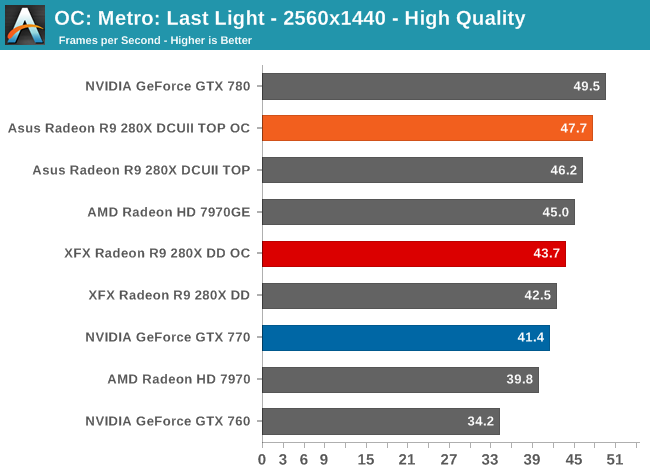
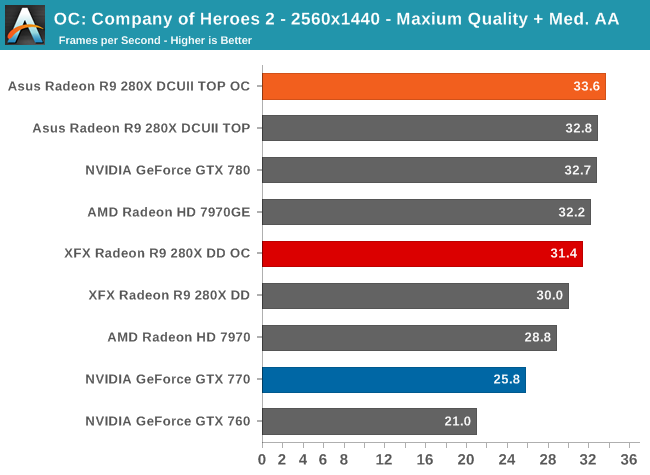
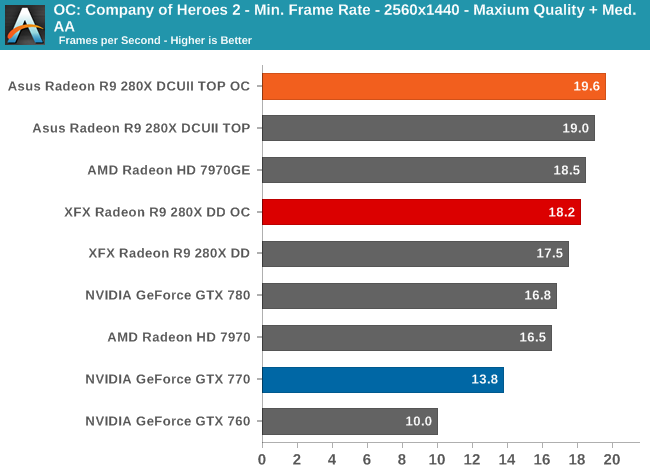
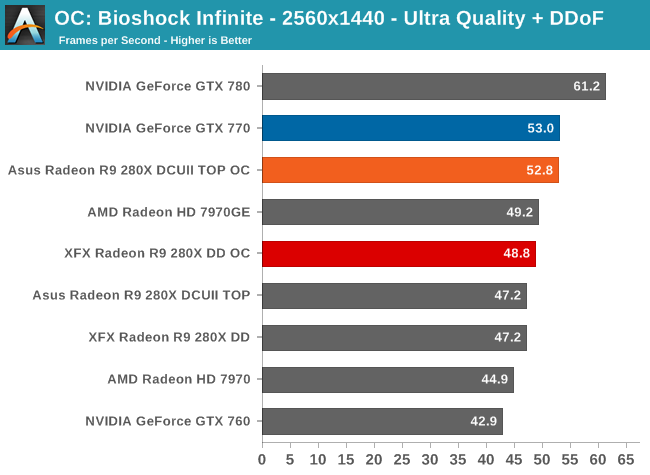
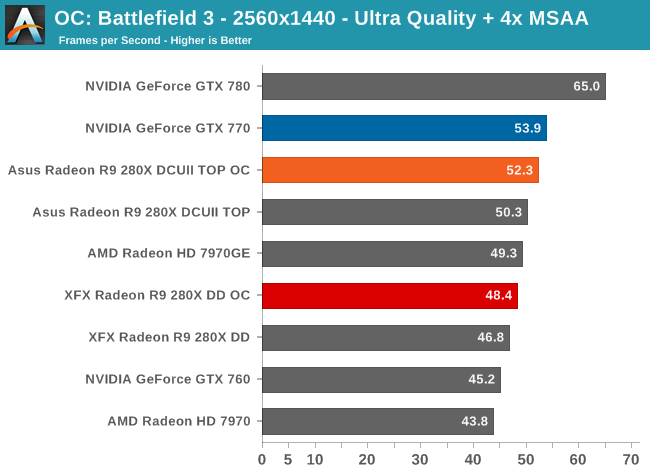
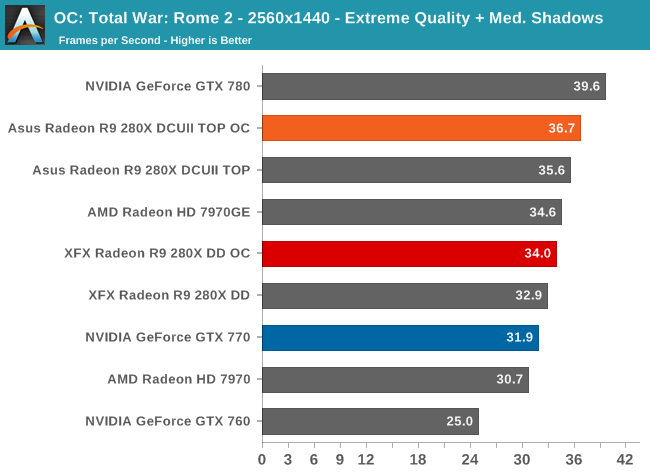
With our 280X cards primarily bottlenecked by GPU performance as opposed to memory performance, the performance gains from our overclocking adventure is limited. 3% on average for both cards is 3% for free, but it’s barely a useful overclock. We typically need 5% before overclocks start becoming interesting and significant enough to improve playability or make higher graphical settings practical.
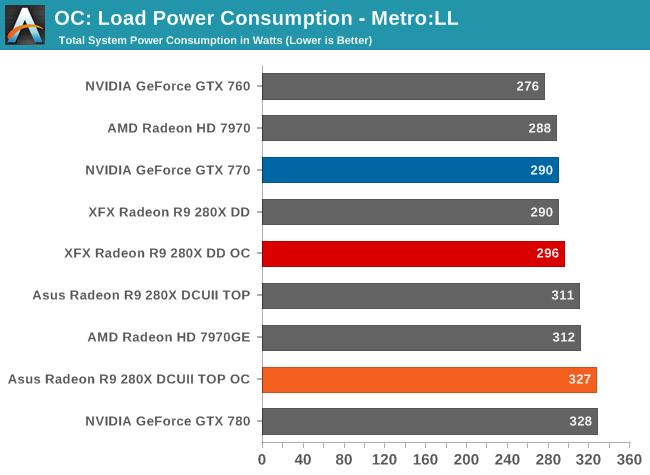
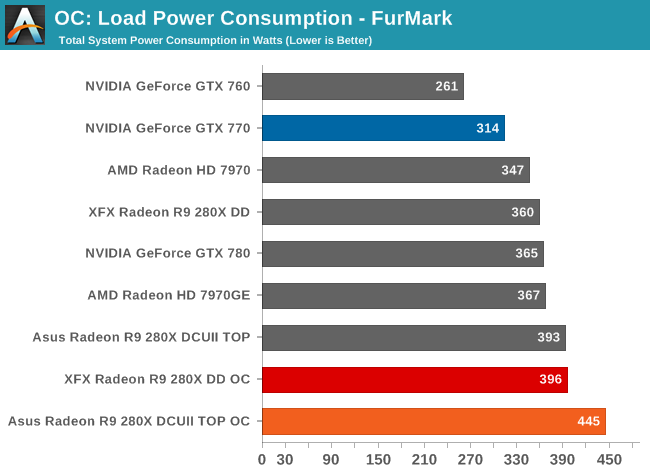
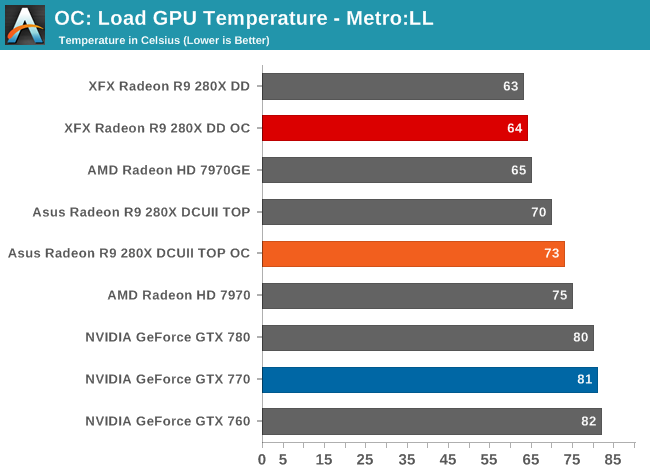
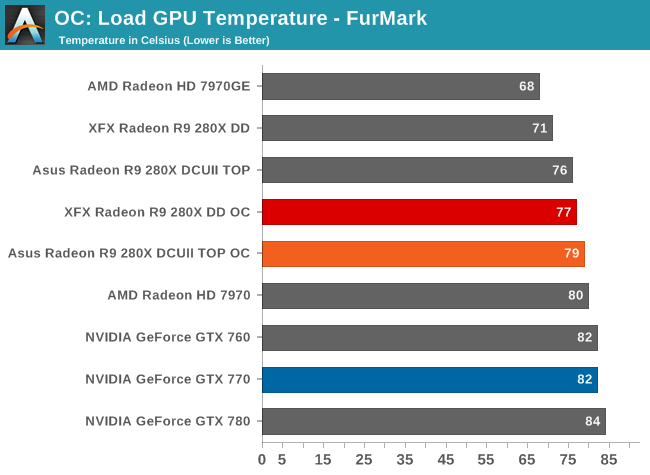
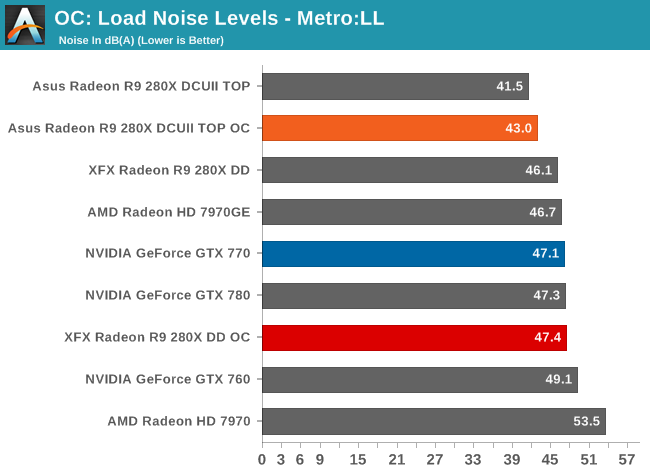
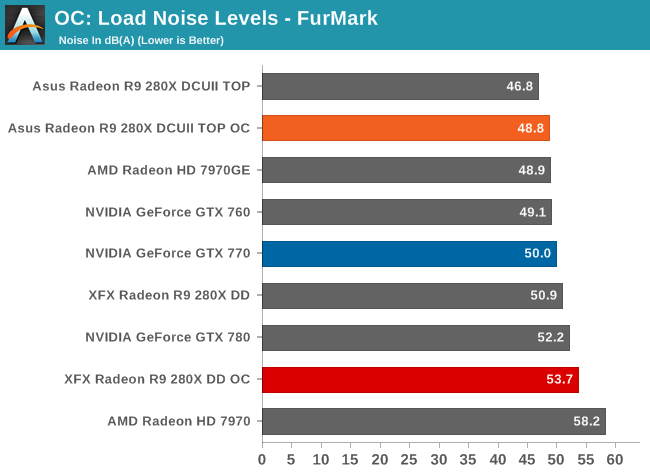
To the credit of the Asus card and its cooler, despite the increased clockspeeds, voltage, and power consumption, it’s able to keep GPU temperatures and load noise to reasonable levels given the circumstances. Still, with the increase in power required to achieve this overclock (particularly in the worst case scenario of FurMark) it’s hard to argue that the additional overclocking was worth the performance gains. With such an extensive factory overclock this is a card that may be better off left at factory clocks.
The XFX card meanwhile suffers much less of a power ramp up due to the lack of voltage control, but we’re still looking at something of a wash on the power/performance front.










151 Comments
View All Comments
Wreckage - Tuesday, October 8, 2013 - link
I did not see these on Newegg yet. Did AMD actually rebrand a card twice and paper launch it twice???Will Robinson - Tuesday, October 8, 2013 - link
That "rebrand" just kicked the crap out of NVDA's GTX770 for $100 less.Read it and weep.
Wreckage - Tuesday, October 8, 2013 - link
At least you can buy a 770 right now. I suppose you could print out a 280 and tape it to the side of your computer. Wake me when they can beat the GK110.rtsurfer - Tuesday, October 8, 2013 - link
If you had bothered to read the article you would have known that these cards are launching this week.Also,your beloved GK110 will be dealt with by R9 290X. I think you'll have to wait till October 15th for that news,as that is when the NDA expires.
colonelclaw - Tuesday, October 8, 2013 - link
Blimey, some people here are never happy. This card is basically a 770 but $100 cheaper. You know what that means? Nvidia will soon be dropping the price of the 770 and hopefully the 780 too - great news all round.Stop whining about 'rebadging' etc, the only thing that matters to 95% of gamers is the relationship between price and framerates.
Da W - Tuesday, October 8, 2013 - link
Precisely. I don't get fanboïsm. I'm gonna run 3600X1920 with full detail at an afordable price before christmas, be it with a 780 or a 290X. Of course 3 screens works better on AMD, i might be willing to pay a premium.gobaers - Tuesday, October 8, 2013 - link
Add a Z axis for power consumption / noise (two sides of the same coin). I'd take a small hit in framerate for a cooler or quieter card.stefstef - Tuesday, October 8, 2013 - link
looks like the 260 is going to replace the 7790 cards. now you get for the price the 7790 cards were introduced the 260. the 7790 prices dropped. now i wonder if i replace my 6670 for my 720p monitor with the rather cheap 7790 or get the new 260.Will Robinson - Tuesday, October 8, 2013 - link
R9 280X looks very good at $300....the improvements in noise and heat output are commendable.I'll be interested to see how it performs in BF4 after the Mantle API update.
It looks very strong in BF4 beta already.
http://techreport.com/review/25466/amd-radeon-r9-2...
nathanddrews - Tuesday, October 8, 2013 - link
Hmm, I think I'll wait for the next rebadge (re-rebadge) at 20nm. Maybe by summer they'll shrink and add the audio enhancements to the whole lineup. I'm happy for the MSRP price being $299, it should force the 7970GE to under that.If anything, I'm hoping that AMD's new lineup forces NVIDIA to stop overcharging for their products. I know that the market drives pricing, but if price scaled with performance, that means that the GTX700 should be $300 and the GTX780 should be about $350? Not that it will happen like that... but the 780 should not be over $400.